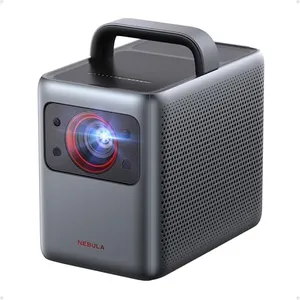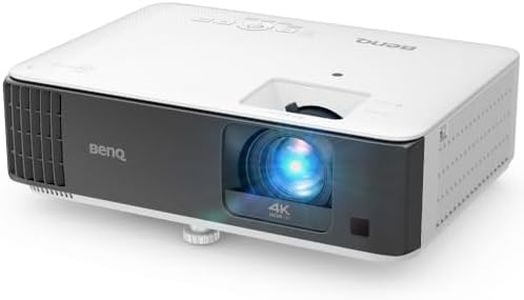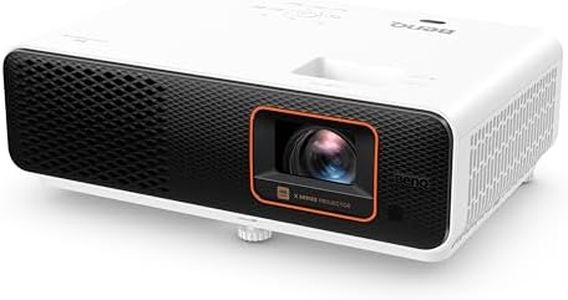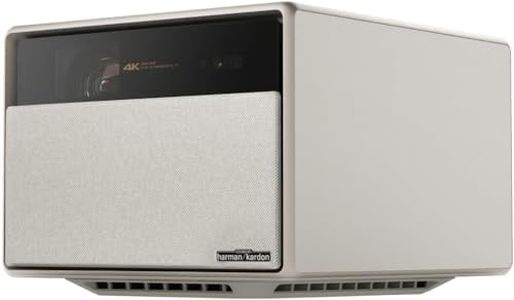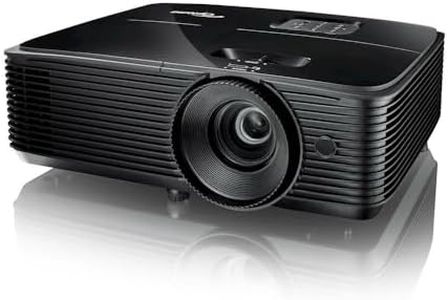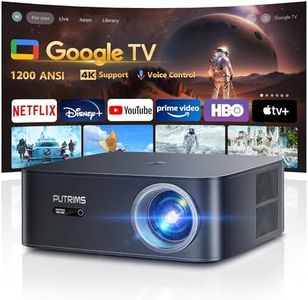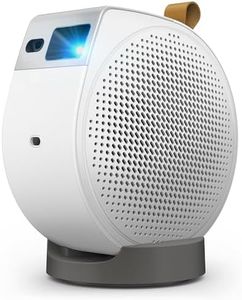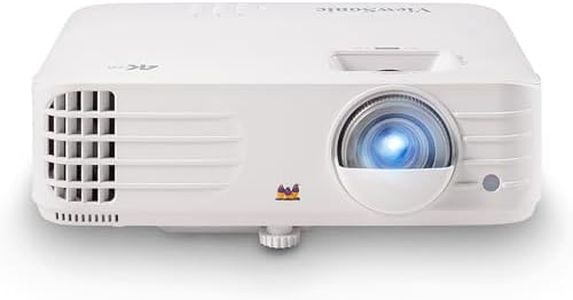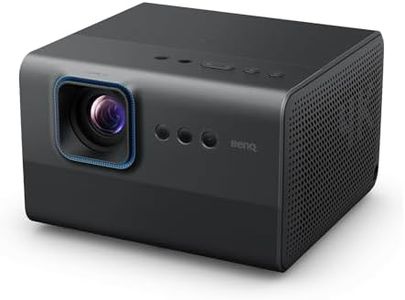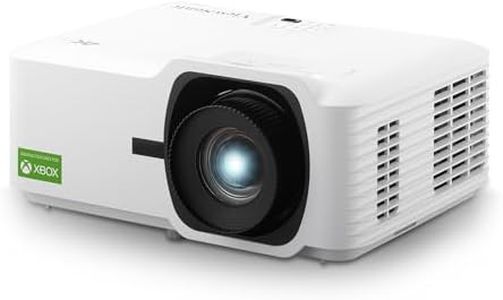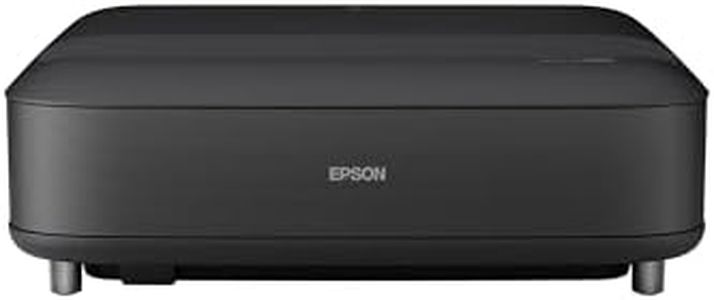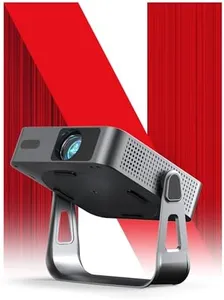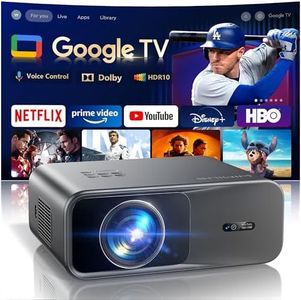We Use CookiesWe use cookies to enhance the security, performance,
functionality and for analytical and promotional activities. By continuing to browse this site you
are agreeing to our privacy policy
10 Best TV Projectors
From leading brands and best sellers available on the web.Buying Guide for the Best TV Projectors
Choosing a TV projector can completely change the way you enjoy movies, sports, or presentations by offering a much larger picture than traditional TVs. The right projector can create a true cinema-like experience at home, but to pick the best one for you, it's important to understand how key specifications affect image quality, ease of use, and where you can use your projector. Knowing what matters most for your room size, lighting conditions, and intended uses will help you pick a projector that fits your needs.Brightness (Lumens)Brightness in projectors is measured in lumens, and it describes how bright the image will be. This is crucial because rooms with more ambient light need brighter projectors to produce clear and visible images. For dark, home theater-like rooms, you can get great results with lower brightness ranges (around 1000–1500 lumens), while living rooms or spaces with windows and lights will benefit from higher brightness (2500 lumens or above). When picking, consider where you'll use your projector and how much light you can control—choose a level of brightness that matches your environment for the clearest picture.
ResolutionResolution tells you how crisp and detailed the projected picture will be by describing the number of pixels displayed. Higher resolutions like Full HD (1920x1080) or 4K (3840x2160) give sharper, more lifelike images, especially important if you plan to watch HD movies or use the projector for gaming. Lower resolutions (like 800x600) are suitable for basic presentations but may look fuzzy for films. If you want a sharp, cinematic experience, aim for at least Full HD, but pick a resolution that matches the quality of your source material and how close you'll sit to the screen.
Contrast RatioContrast ratio measures the difference between the darkest blacks and the brightest whites your projector can display, affecting how 'vivid' and realistic the image looks. Higher contrast ratios bring out more subtle details in movies and make colors pop, which is especially useful for watching films or shows in dark environments. If you prefer deeper, richer colors and better shadow detail, look for a higher contrast ratio—if your room has a lot of ambient light, contrast ratio matters less, but it's still a nice feature for movie lovers.
Throw DistanceThrow distance refers to how far the projector needs to be from the screen to create a certain image size. Some are short-throw or ultra-short-throw, meaning they can be placed very close to the screen for big images, which is perfect for small rooms or for quick, easy setup. Standard-throw projectors need more space but can project very large images from further away. Choose a throw distance that fits your room size and how much flexibility you need in placing your projector.
Lamp LifeLamp life tells you roughly how many hours the projector’s light source will last before needing replacement. Longer lamp life (measured in thousands of hours) means less maintenance over time, which is ideal for frequent use. If you plan to use your projector as your main TV, go for a longer lamp life; for occasional movie nights, you can settle for less without much worry.
Portability & SizeProjectors come in many sizes, from pocket-sized mini projectors to large, permanent units. If you want to use the projector in different rooms, or even outside, look for lighter and more compact models. If your projector will have a permanent home, a heavier, bulkier projector might be fine. Think about where and how often you’ll move your projector to choose the right size.
Inputs and ConnectivityModern projectors offer a range of input options—HDMI, USB, Wi-Fi, and more—for connecting devices like streaming sticks, laptops, or game consoles. Make sure your projector supports the devices you plan to use most. If you enjoy wireless streaming or want smart features, look for projectors with wireless connectivity or built-in apps. Always check the types and numbers of ports to ensure your setup will be easy and flexible.
Built-in AudioSome projectors include built-in speakers, but their quality and loudness can vary a lot. If audio quality matters to you and you don’t plan to use external speakers, look for a projector known for decent built-in audio. For a more immersive sound experience, you can always connect your own speakers, but knowing what the projector offers helps you plan your setup.

